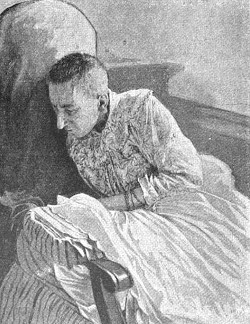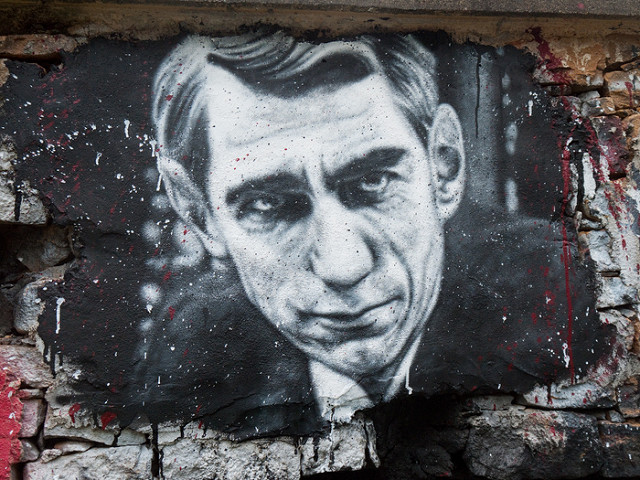The longest word in the English language is FLOCCINAUCINIHILIPILIFICATION.
It means “the act of estimating (something) as worthless.”
The longest word in the English language is FLOCCINAUCINIHILIPILIFICATION.
It means “the act of estimating (something) as worthless.”
Surprisingly old words:
Amazingly, light beer (“leoht beor”) first shows up around the year 1000.

Early European colonists were staggered at the abundance of fish in the Chesapeake Bay. William Byrd II wrote in his natural history of Virginia:
Herring are not as large as the European ones, but better and more delicious. When they spawn, all streams and waters are completely filled with them, and one might believe, when he sees such terrible amounts of them, that there was as great a supply of herring as there is water. In a word, it is unbelievable, indeed, indescribable, as also incomprehensible, what quantity is found there. One must behold oneself.
More accounts here. “The abundance of oysters is incredible,” marveled Swiss explorer Francis Louis Michel in 1701. “There are whole banks of them so that the ships must avoid them. A sloop, which was to land us at Kingscreek, struck an oyster bed, where we had to wait about two hours for the tide.”

In May 1901, the attorney general of Paris received an anonymous letter. It read, “I have the honor to inform you of an exceptionally serious occurrence. I speak of a spinster who is locked up in Madame Monnier’s house, half-starved and living on a putrid litter for the past twenty-five years — in a word, in her own filth.”
When police investigated, they found in Monnier’s attic a 52-year-old woman who weighed barely 25 kilograms. One policeman described the scene: “The unfortunate woman was lying completely naked on a rotten straw mattress. All around her was formed a sort of crust made from excrement, fragments of meat, vegetables, fish, and rotten bread. … We also saw oyster shells, and bugs running across Mademoiselle Monnier’s bed. The air was so unbreathable, the odor given off by the room was so rank, that it was impossible for us to stay any longer to proceed with our investigation.”
In 1874, when Blanche was 25, her mother Louise had locked her away to prevent her marrying a “penniless lawyer,” and for 25 years she and Blanche’s brother had pretended that she had disappeared. Louise was arrested but died shortly afterward; the brother was convicted but acquitted on appeal. Blanche was admitted to a psychiatric hospital but died in 1913. The identity of the letter writer who revealed all this was never discovered.
Michael Snow’s 1967 experimental film Wavelength consists essentially of an extraordinarily slow 45-minute zoom on a photograph on the wall of a room. William C. Wees of McGill University points out that this raises a philosophical question: What visual event does this zoom create? In a tracking shot, the camera moves physically forward, and its viewpoint changes as a person’s would as she advanced toward the photo. In Wavelength (or any zoom) the camera doesn’t move, and yet something is taking place, something with no analogue in ordinary experience.
“If I actually walk toward a photograph pinned on a wall, I find that the photograph does, indeed, get larger in my visual field, and that things around it slip out of view at the peripheries of my vision. The zoom produces equivalent effects, hence the tendency to describe it as ‘moving forward.’ But I am really imitating a tracking shot, not a zoom. … I think it is safe to say that no perceptual experience in the every-day world can prepare us for the kind of vision produced by the zoom.”
“What, in a word, happens during a viewing of that forty-five minute zoom? And what does it mean?”
(From Nick Hall, The Zoom: Drama at the Touch of a Lever, 2018.)

While a visiting fellow at All Souls College, Oxford, in 1978, Claude Shannon pondered a personal challenge he faced there:
An American driving in England is confronted with a wild and dangerous world. The cars have the driver on the right and he is supposed to drive on the left side of the road. It is as though English driving is a left-handed version of the right-handed American system.
I can personally attest to the seriousness of this problem. Recently my wife and I, together with another couple on an extended visit to England, decided to jointly rent a car. … With our long-ingrained driving habits the world seemed totally mad. Cars, bicycles and pedestrians would dart out from nowhere and we would always be looking in the wrong direction. The car was usually filled with curses from the men and with screams and hysterical laughter from the women as we careened from one narrow escape to another.
His solution was “grandiose and utterly impractical — the idle dream of a mathematician”:
How will we do this? In a word, with mirrors. If you hold your right hand in front of a mirror, the image appears as a left hand. If you view it in a second mirror, after two reflections it appears now as a right hand, and after three reflections again as a left hand, and so on.
Our general plan is to encompass our American driver with mirror systems which reflect his view of England an odd number of times. Thus he sees the world about him not as it is but as it would be after a l80° fourth-dimensional rotation.
A corresponding adjustment to the steering system will turn the car left when the driver steers right, and vice versa. And filling the cabin with a high-density liquid will reverse the feeling of centrifugal force as well. “A snorkel provides for his breathing and altogether, with our various devices, he feels very much as though he were at home in America!”
(Claude E. Shannon, “The Fourth-Dimensional Twist, or a Modest Proposal in Aid of the American Driver in England,” typescript, All Souls College, Oxford, Trinity term, 1978; via Jimmy Soni and Rob Goodman, A Mind at Play: How Claude Shannon Invented the Information Age, 2017.)
A spelling net is the pattern made when one writes down one instance of each unique letter that appears in a word and then connects these letters with lines, spelling out the word. For instance, the spelling net for VIVID is made by writing down the letters V, I, and D and drawing a line from V to I, I to V, V to I, and I to D.
Different words produce different spelling nets, of course, but every spelling net is an example of a graph, a collection of points connected by lines. A graph is said to be non-planar if some of the lines must cross; in the case of the spelling net, this means that no matter how we arrange the letters on the page, when we connect them in order we find that at least two of the lines must cross.
A word with a non-planar spelling net is called an eodermdrome, an ungainly name that itself illustrates the idea. The unique letters in EODERMDROME are E, O, D, R, and M. Write these down and run a pen among them, spelling out the word. You’ll find that no matter how the letters are arranged, it’s never possible to complete the task without at least two of the lines crossing:

Ross Eckler sought all the eodermdromes in Webster’s second and third editions; another example he found is SUPERSATURATES:

Since spelling nets are graphs, they can be studied with the tools of graph theory, the mathematical study of such networks. One result from that discipline says that a graph is non-planar if and only if it can be reduced to one of the two patterns marked K5 and K(3, 3) above. Since both EODERMDROME and SUPERSATURATES contain these forbidden graphs, both are non-planar.
A good article describing recreational eodermdrome hunting, by computer scientists Gary S. Bloom, John W. Kennedy, and Peter J. Wexler, is here. One warning: They note that, with some linguistic flexibility, the word eodermdrome can be interpreted to mean “a course on which to go to be made miserable.”

In 1726, the Swiss naturalist Johann Jakob Scheuchzer mistook the skull and vertebral column of a large salamander from the Miocene epoch for the “betrübten Beingerüst eines alten Sünders” (sad bony remains of an old human sinner) and dubbed it Homo diluvii testis, “the man who witnessed the Deluge.” The fossil lacked a tail or hind legs, so he thought it was the remains of a trampled human child:
It is certain that this [rock] contains the half, or nearly so, of the skeleton of a man; that the substance even of the bones, and, what is more, of the flesh and of parts still softer than the flesh, are there incorporated in the stone; in a word it is one of the rarest relics which we have of that accursed race which was buried under the waters. The figure shows us the contour of the frontal bone, the orbits with the openings which give passage to the great nerves of the fifth pair. We see there the remains of the brain, of the sphenoidal bone, of the roots of the nose, a notable fragment of the maxillary bone, and some vestiges of the liver.
The fossil made its way to Teylers Museum in the Netherlands, where in 1811 Georges Cuvier recognized it as a giant salamander. Ironically, Scheuchzer’s original belief is reflected in the fossil’s modern name, Andrias scheuchzeri — Andrias means “image of man.”
Howard W. Bergerson devised these:

As in a word square, the “columns” in each sum are identical with the “rows.”
12/07/2021 UPDATE: Reader James Foster finds that 20 such squares are possible. (Thanks, James.)
A visitor’s description of William Kingston, a Somerset farmer born without arms, recounted in John Platts, Encyclopedia of Natural and Artificial Wonders and Curiosities, 1876:
He highly entertained us at breakfast, by putting his half-naked feet upon the table as he sat, and carrying his tea and toast between his great and second toe to his mouth, with as much facility as if his foot had been a hand, and his toes fingers. … He then shewed me how he shaves himself with the razor in his toes; and he can comb his own hair. He can dress and undress himself, except buttoning his clothes. He feeds himself, and can bring both his meat or his broth to his mouth, by holding the fork or spoon in his toes. He cleans his own shoes, lights the fire, and does almost any domestic business as well as any other man. … He can milk his cows with his toes, and cuts his own hay, binds it up in bundles, and carries it about the field for his cattle. Last winter he had eight heifers constantly to fodder. The last summer he made all his hay-ricks. He can do all the business of the hay-field (except mowing) as fast and as well with his feet as others can with rakes and forks. … In a word, he can nearly do as much without as others can with their arms.